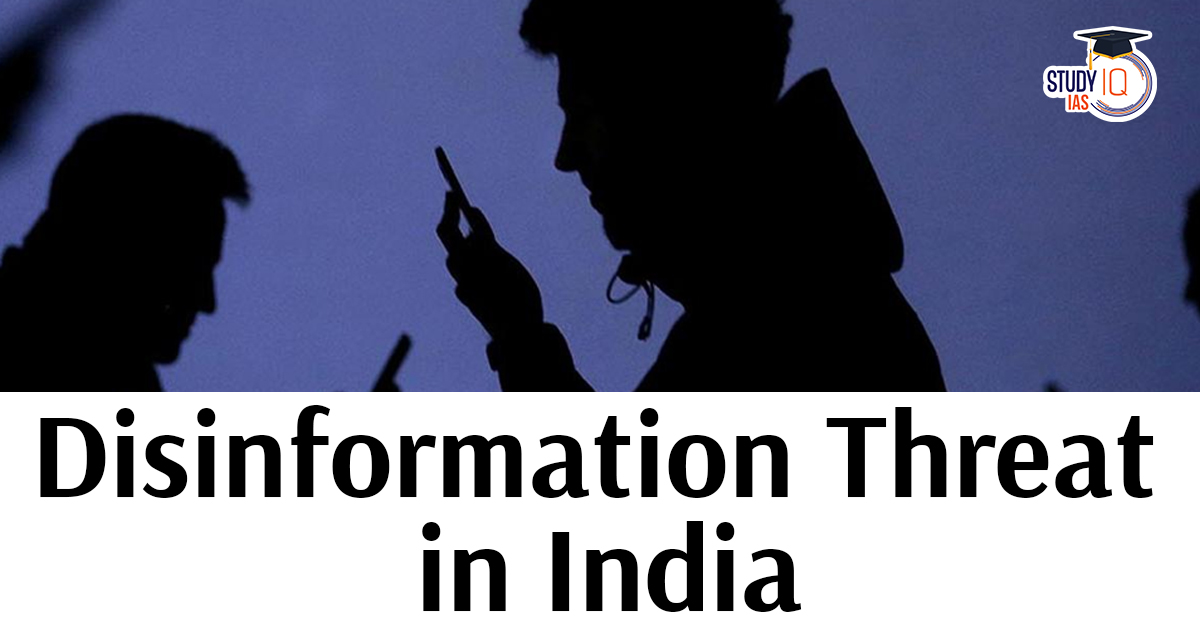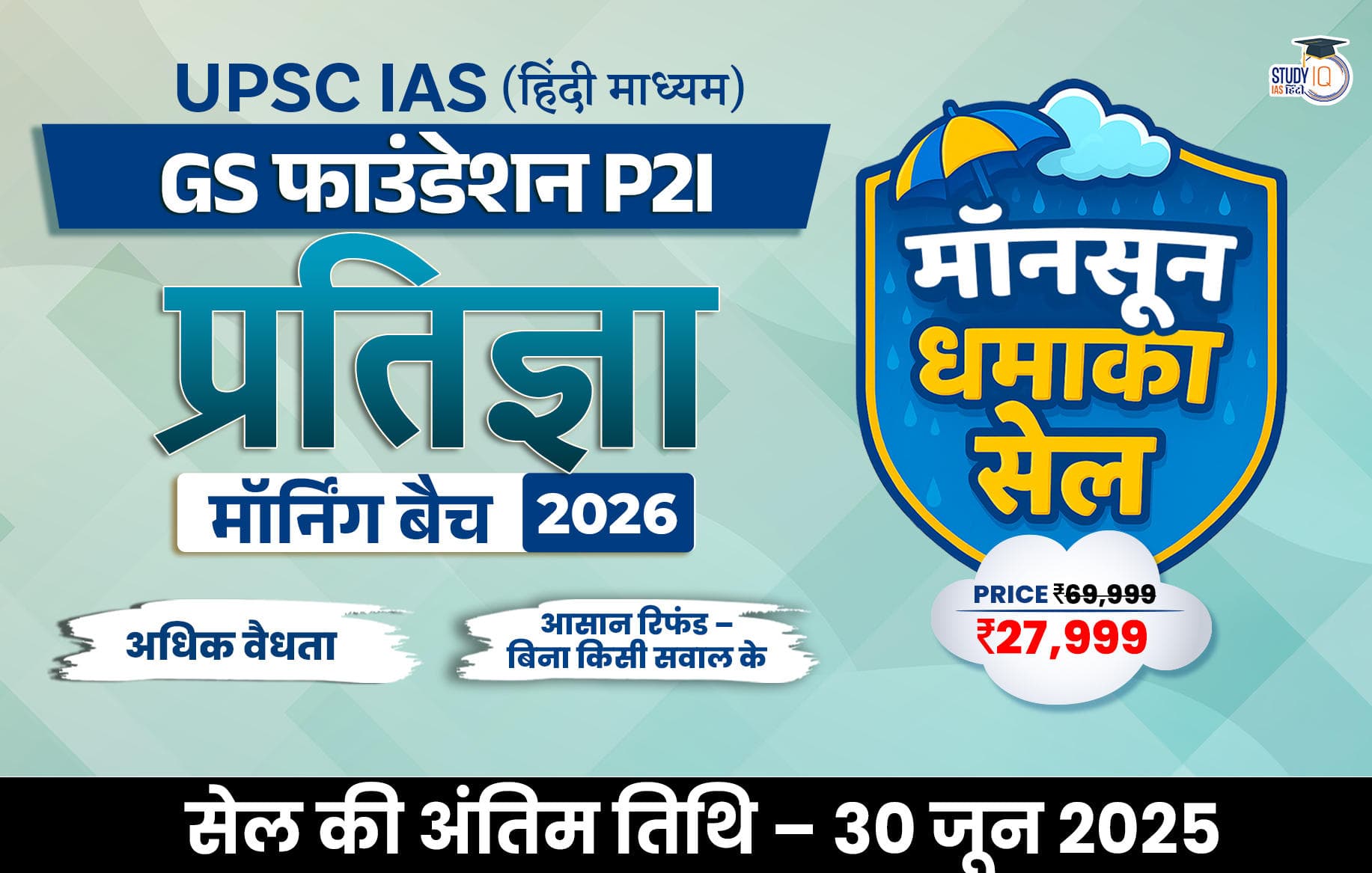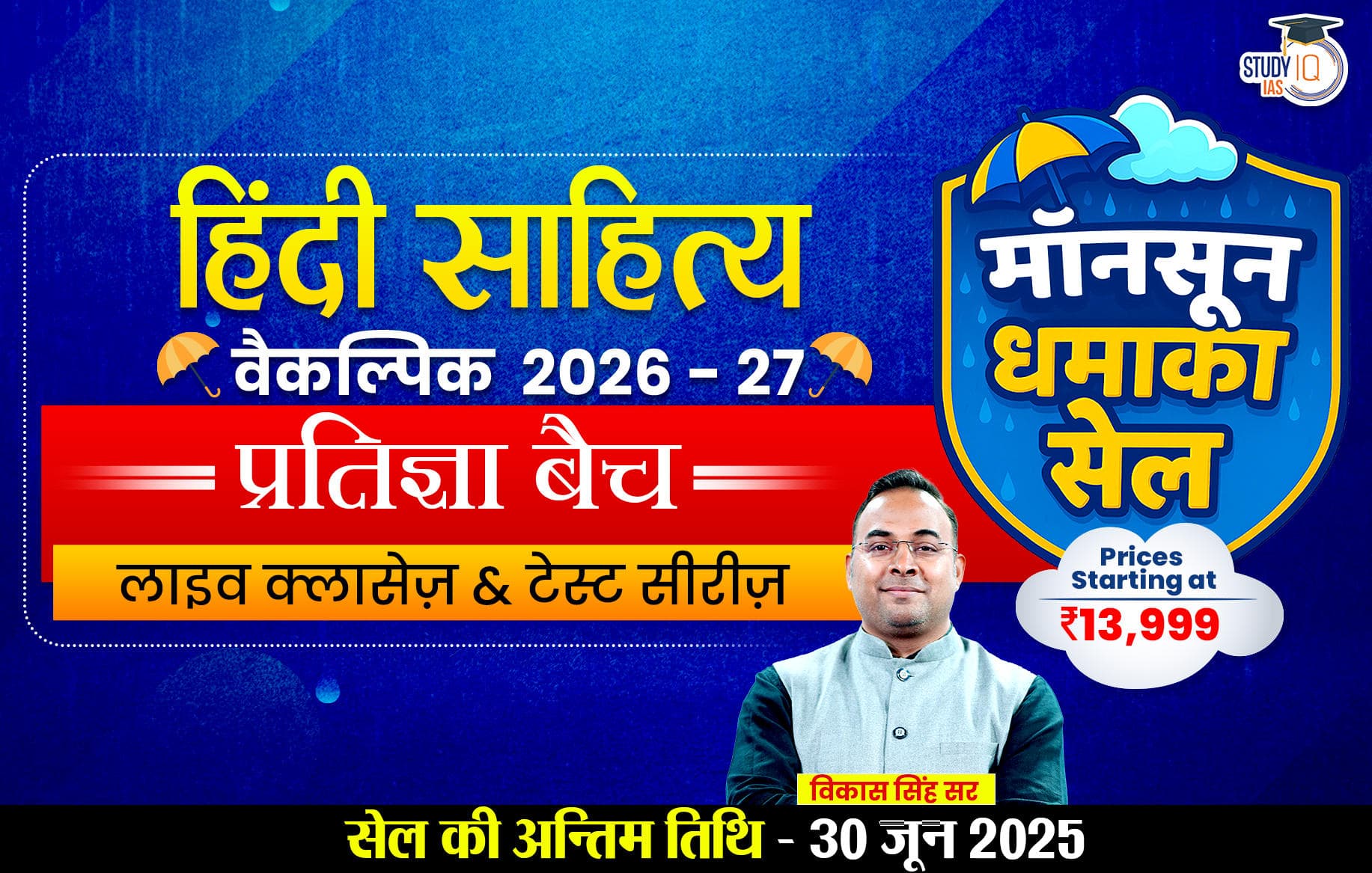Table of Contents
Context: The World Economic Forum’s (WEF) Global Risks Report 2025 underscores misinformation and disinformation as the highest-ranked short-term global threat. India is among the world’s most vulnerable nations to misinformation and disinformation, as highlighted by the World Economic Forum’s Global Risks Report.
- AI-generated content and social media platforms are major drivers, rapidly amplifying unchecked and misleading information.
- De-influencing, where influencers discourage purchases, can foster mindful consumption but often relies on sensationalism and clickbait, blurring lines between fact and manipulation.
Need for Tackling the Disinformation Threat in India
- Scale of Internet Users: India is set to surpass 900 million Internet users, making it highly vulnerable to digital misinformation.
- Political & Social Manipulation: The spread of fake news, deepfakes, and propaganda can influence voter behaviour, create social unrest, and destabilize democracy.
- Economic & Diplomatic Impact: Misinformation fuels consumer boycotts, economic conflicts, and international tensions, affecting investor confidence and bilateral relations.
- Foreign Disinformation Threats: India has faced persistent Chinese disinformation since the 2017 Doklam standoff, leading to the ban of over 300 Chinese apps, including TikTok.
- Declining Trust in Media: With mainstream media losing credibility, citizens rely more on social media, where 46% of misinformation is political, 33.6% general, and 16.8% religious (Indian School of Business & CyberPeace Foundation report).
- Risk to India’s Youth Dividend: False narratives influence public opinion, communal harmony, and educational awareness, making India’s young population a prime target.
Why Ending Misinformation in India Is Crucial?
- Threat to Democracy: Misinformation can destabilize the legitimacy of elected governments and undermine democratic processes by influencing voters and polarizing society.
- Social Harmony at Risk: False information fuels communal tensions, social conflicts, and even violence, as seen in incidents like mob lynchings triggered by rumours spread on WhatsApp.
- Economic Disruption: Manipulated narratives can disrupt markets, erode investor confidence, and create economic instability, impacting millions in a country with over 900 million internet users.
- Public Health and Safety: Misinformation about health (e.g., COVID-19 vaccines) hampers effective response to crises, spreads panic, and endangers lives.
- Erosion of Trust: Rampant fake news leads to declining trust in media, institutions, and public information, making it harder for authorities to communicate during emergencies.
- Youth Vulnerability: India’s large, young, and digitally active population is especially at risk, making digital literacy and critical thinking essential.
- Global Reputation: Persistent misinformation can damage India’s image as a stable democracy and hinder its global partnerships
Suggestive Measures for Tackling the Disinformation Threat in India
- Algorithmic Oversight & Developer Upskilling: AI and social media companies should be mandated to ensure algorithm transparency and train developers to prevent bias-driven misinformation.
- Strengthening Fact-Checking Mechanisms: Expand initiatives like Shakti – India Election Fact-Checking Collective and establish real-time deepfake analysis units for early detection.
- Regulatory Reforms & Platform Accountability: Implement content moderation policies, regular risk assessments, and independent supervisory boards to oversee Big Tech.
- Enforce ad transparency rules, ensuring disclosure of funding sources for online political advertisements.
- Public Awareness & Digital Literacy: Expand financial literacy models like RBI’s campaign with Amitabh Bachchan to combat digital disinformation.
- Introduce school and university-level digital literacy programs for identifying misinformation.
- Cross-Border Collaboration: Work with global coalitions to combat Foreign Information Manipulation and Interference (FIMI) through joint cybersecurity initiatives.
- Safeguarding Democracy & Press Freedom: Protect journalists and fact-checkers from state or corporate pressure while ensuring laws do not lead to censorship or excessive surveillance.
Also Read: Cyber Security Regime in India
Legal and Regulatory Landscape
- Constitutional Rights: Article 19(1)(a) guarantees free speech, but Article 19(2) allows restrictions for defamation, public order, and morality.
- The Supreme Court has clarified that free speech does not protect misinformation or harmful content.
- Consumer Protection Act, 2019: Bans misleading advertisements and holds influencers accountable for deceptive promotions.
- IT Act (Sections 66 & 67), Intermediary Guidelines 2021: Penalise harmful digital content and require platforms to moderate and remove misinformation.
- ASCI/SEBI Guidelines: Set ethical standards for influencer marketing; non-compliance can lead to blacklisting and public reprimands.
Challenges and Gaps
- Health Misinformation: Despite guidelines, misleading health advice and viral “weight loss” reels are rampant, often using shock tactics and half-truths to go viral.
- Blurred Lines: Influencer content often mixes organic opinions and paid promotions, using selective data and emotional appeals to manipulate audiences.
- Regulatory Shortcomings: India lacks a comprehensive law specifically targeting fake news, relying on a patchwork of existing statutes.
Recent and Evolving Measures
- Stricter Enforcement: SEBI has tightened rules on “finfluencers,” banning real-time stock data in educational content to prevent unqualified financial advice.
|
Fact |
| A finfluencer is an individual who shares financial advice and information, often through social media, to a large audience. |
- Parental Consent: Draft Digital Personal Data Protection Rules, 2025, require parental consent for minors to join social media, aiming to protect children from harmful content.
- Fact-Checking Initiatives: The Press Information Bureau’s Fact-Check Unit, National Cyber Coordination Centre, and AI-based monitoring systems are used to debunk misinformation and monitor threats.
- Judicial Oversight: Courts have held influencers accountable for false endorsements, especially in health, and stressed that only qualified professionals should offer health advice.
- Global Alignment: India is urged to adopt frameworks similar to the EU’s Digital Services Act for better oversight.
| Key Examples |
|
Recommendations and the Way Forward
- Registration and Monitoring: Establishing a database for health influencers to ensure accountability and transparency in public health communications.
- Consumer Education: Brands must invest in educating consumers, while platforms and regulators enforce strict guidelines against misinformation.
- Ethical Standards: Robust ethical practices must complement legal measures, especially in health-related content, to safeguard public interests.
- Collaborative Approach: Government, tech companies, and civil society must work together to strengthen digital literacy, promote critical thinking, and ensure responsible content creation.


 Mental Healthcare in India, Scope and Go...
Mental Healthcare in India, Scope and Go...
 Most Commonly Used Cancer Drugs and Thei...
Most Commonly Used Cancer Drugs and Thei...
 India Launched AI-Powered Traffic Manage...
India Launched AI-Powered Traffic Manage...





















